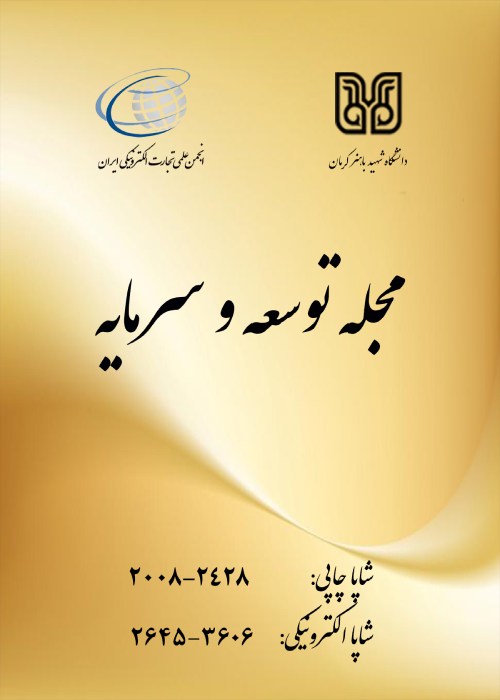Modelling of the Exchange Rate Volatility and Uncertainty Impacts on Agriculture Import: Evidence from Iran
Although most business models argue that exchange rate volatility increase uncertainty and risk, thereby reducing trade flows and imports; however, some other studies show the opposite results. Although many studies have been conducted on the exchange rate on trade and specifically on imports in the world, but the non-linear and asymmetric effect of exchange rate fluctuations and uncertainty on agricultural imports in Iran remains unknown. Therefore, this article tries to test the absence or asymmetry in possible photos of agricultural imports due to exchange rate changes in the Iranian economy. In addition, this study provides empirical evidence to advance policy-making in exchange rate management, as exchange rate uncertainties affect trade, and the results of this study provide information that can guide and develop the literature on the subject. The present study has examined the effect of market exchange rate uncertainty (unofficial) on the import of Iran's agricultural sector in the period 2001-2016.
Exponential generalized conditional heterogeneity variance (EGARCH) model for deriving exchange rate volatility and conditional variance for estimating exchange rate uncertainty and two methods of Autoregressive distributed lag (ARDL) and Non-linear Autoregressive Distributed Lag (NARDL) to estimate the effect of volatility and uncertainty agricultural imports.
The results indicate that the market exchange rate always has a positive and increasing effect on the value of imports in the agricultural sector (which is mainly input of agriculture production). In addition, examining the nonlinear relationship between exchange rate uncertainty and agricultural imports shows that positive shocks (increasing) of uncertainty has a decreasing effect on agricultural imports and negative shocks (decreasing) of uncertainty has an increasing effect on agricultural imports. Examining the linear relationship between exchange rate fluctuations and agricultural sector imports shows that current level of fluctuations do not have a significant effect on agricultural sector imports, but after a lag level (past period), it has a significant but positive weak effect on agricultural sector imports. Finally, by examining the long-term and short-term model between these two variables, no significant relationship was observed.Examination of the linear relationship between exchange rate fluctuations and agricultural sector imports shows that current exchange rate fluctuations do not have a significant effect on agricultural sector imports, but the previous period has a positive, significant and weak effect on agricultural sector imports. Examining the long-term and short-term relationships of these two variables, no significant relationship was observed. This is while the real free market exchange rate still has a positive effect on imports. However, this study on the effect of exchange rates is in line with most domestic and foreign studies and confirms their results.The results of research in modeling of effect of currency fluctuations on agricultural imports show that the effect of currency fluctuations on imports is symmetrical and currency fluctuations with a lag period have a positive and weak effect on imports. In the long run, the positive shock of currency fluctuations has not had a significant effect on agricultural imports. Also, 96% of short-term and long-term imbalances are adjusted in the pattern of the effect of exchange rate fluctuations on agricultural imports. Due to the high speed of adjustment, if positive currency shocks are managed, its negative effects will be adjusted after a period. Free market exchange rate has a significant and positive effect on the value of agricultural imports. GDP and prices and trade liberalization have a significant and positive effect on agricultural imports.
Exchange rate uncertainty should be considered as an important issue by economic policy makers to reduce risk of trade flows. It is recommended to use exchange rate risk coverage tools, clarify government foreign exchange policies to reduce the risk of exchange rate fluctuations and uncertainty to ensure a continuous flow of agricultural import inputs. Exchange rate has always been considered as a key and important economic variable in policy making. It is recommended to use exchange rate risk hedging tools, clarify government foreign exchange policies to reduce the risk of exchange rate fluctuations and uncertainty to ensure a continuous flow of agricultural import inputs.In conditions of volatile and risky currency, the devaluation of the national currency (exchange rate increase) causes an increase in the value of imports in the agricultural sector, which indicates the management of foreign exchange expenditures on agricultural imports in line with government sovereign duties.The import of the agricultural sector reacts to the illegal market exchange rate rather than reacting to the uncertainty and riskiness of the exchange rate, and this high rate of adjustment, if positive exchange rate shocks are managed, its negative effects are adjusted after a period. In addition, high-risk currency conditions increase incentives and competition in the import of the agricultural sector, and the high sensitivity of agricultural imports to the illegal market exchange rate confirms this result. The behavior pattern of exchange rate (linear and nonlinear/ symmetric or asymmetric) and choosing a illegal market exchange rate instead of government and official exchange rates is effective in analyzing the impact of exchange rates on imports.Finally, there are many changes and fluctuations in the Iranian economy, it is suggested that, firstly, by formulating appropriate policies and strategies to stabilize the exchange rate and increase trade, the field of controlling and adjusting currency uncertainties be provided to witness this. Increase production, exports and improve the trade balance.
- حق عضویت دریافتی صرف حمایت از نشریات عضو و نگهداری، تکمیل و توسعه مگیران میشود.
- پرداخت حق اشتراک و دانلود مقالات اجازه بازنشر آن در سایر رسانههای چاپی و دیجیتال را به کاربر نمیدهد.


